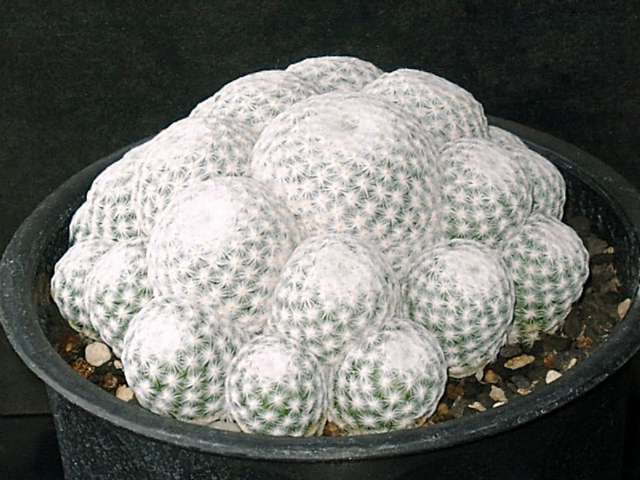Habitat: It grows mainly in open places between grasses and calcareous rocks, in association with other cactus species like Echinocactus grusonii, Ferocactus hystrix and Thelocactus leucanthus.
Description: It is small growing cactus that look like a little golf ball. It usually stays solitary, or occasionally clusters from the base.
Stems: Globose or slightly elongated as it ages, 2 - 3.5 cm in diameter and height. (In cultivation it can grow very slowly up to 8 cm tall). Without latex.
Flower: Diurnal, quite large for a Mammillaria, pale pink to red-violet, 20 - 25 mm long and very showy.
Blooming season (Europe): April to May, it starts flowering when it gets to be 5-7 years old, and reaches at least 3 cm in diameter.
Lighting: Requires maximum sun exposure to reach its full potential, and to achieve success in flowering
Cultivation: This plant isn't famous for being easy to cultivate, but in good conditions with excellent ventilation, it grows without difficulty. It is especially sensitive to overwatering. So careful watering and an open mineral potting soil are a must. Avoid the use of peat or other humus sources in the potting mixture.
 Don't add limestone to the potting mix (which must be moderately acidic). It can be sensitive to frost (but if dry they are resistant to -5° C). A winter rest that allows the plant to shrivel (perhaps losing up to 25% of its summer height) will encourage flowering and long time survival. Be careful to encourage slow growth.
Don't add limestone to the potting mix (which must be moderately acidic). It can be sensitive to frost (but if dry they are resistant to -5° C). A winter rest that allows the plant to shrivel (perhaps losing up to 25% of its summer height) will encourage flowering and long time survival. Be careful to encourage slow growth.Propagation: Direct sow after last frost. (it usually doesn't produces offsets).

4 comments:
Greetings,
This is a message for the webmaster/admin here at cactuslover.blogspot.com.
May I use part of the information from this blog post right above if I provide a link back to your website?
Thanks,
John
Of course, you can use the information from here. I'll be glad if it'll be useful for another people
Hi Soccer
Just wondering if you have any experience with dioscorea elephantipes?
Frankly, I don't have the dioscorea elephantipes in my collection but I'd love to because it's the interesting plant:its surface is so different and flowering sexes are found on separate plants. It also is very challenging to propagate.
According to my information, the dioscorea elephantipes grows like my Pachypodium: it'll drop leaves in Fall and winter and have new leaves in spring and summer.
Post a Comment